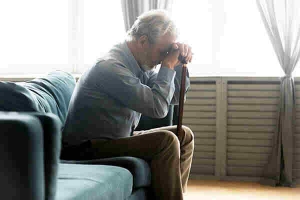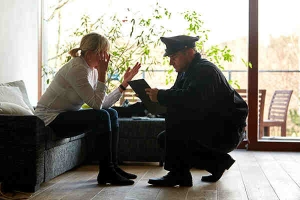At Cohen & Cohen Personal Injury Lawyers, P.C., we are your trusted advocates in the heart of Queens, New York. Have you recently experienced a distressful personal injury accident in Queens, or Long Island? If so, we’re here to not only advocate for your rights, but also the compensation you’re entitled to.
At Cohen & Cohen, we understand the unique dynamics of Queens personal injury cases. Our award-winning legal team brings years of experience and a deep understanding of New York personal injury law to the table. Queens is unlike any other city in the world, and we believe your legal representation should reflect that uniqueness. Our commitment extends beyond personal injury law; we also offer legal assistance in real estate planning, probate court, and elder law matters.
We offer free, no-obligation case evaluations for all potential clients, and take personal injury cases on contingency, so there’s no additional financial stress for you to determine the best plan of action for your unique situation.
Personal Injury Attorneys Near You That Go The Distance
Our personal injury lawyers at Cohen & Cohen understand that navigating a personal injury claim can be overwhelming and stressful, especially when trying to recoup from the injuries you sustained in your personal injury accident. This is why we offer free, no-obligation case evaluations to all personal injury victims. We take personal injury cases on contingency, alleviating any additional financial stress as we work together to determine the best course of action for your specific Queens personal injury claim.
Our approach is simple yet powerful. We fight tirelessly to maximize compensation for our injured clients, going the extra mile to make sure your rights are protected. From meticulous case analysis to thorough trial preparation, we leave no stone unturned in pursuit of justice for you. When faced with handling demeaning and deceptive insurance companies or corporate entities, we stand ready to take your case to trial and secure the best possible outcome before a jury.
At Cohen & Cohen, we believe in developing positions of strength to exceed our clients’ expectations. With a steadfast commitment to excellence and a track record of success, we are here to guide you through every step of your personal injury journey. Let us not only be your advocates, but also your allies, and your voice in the pursuit of justice and the compensation you deserve.
Contact our team of Queens personal injury attorneys today to learn how we can help you get back on track after a personal injury caused by another individual’s negligence in Queens or anywhere in the five boroughs of New York City. Your road to recovery starts here.
Types Of Personal Injury Cases We Handle
At Cohen & Cohen, we understand that life in a bustling metropolis like Queens comes with its share of risks and challenges. We never plan on being injured, however, for one reason or another we can find ourselves struggling to keep afloat after sustaining injuries due to another person’s negligence. From navigating the busy streets to working on construction sites, accidents and injuries can happen when you least expect them. That’s why our team of personal injury lawyers near you is dedicated to more than just car accident cases – we’re here to support you through a variety of legal challenges. Whether you’re dealing with a car accident, workplace injury, or any other personal injury matter, our experienced car accident lawyers and car accident attorneys in New York are ready to fight for your rights and help you secure the compensation you deserve.
In the event of physical injuries or emotional distress caused by the negligence or wrongful acts of others, you may be entitled to compensation under New York’s Consolidated Laws. Our primary focus is on fighting for optimal results in personal injury disputes, ranging from auto accidents to slip and fall incidents and beyond.
While we have a team of Queens car accident lawyers, distracted driving accident lawyers, and truck accident lawyers in Queens who are ready to advocate for you, our expertise extends far beyond vehicular accidents. Our seasoned car accident attorneys in New York have extensive experience in a wide range of practice areas.
In personal injury matters, we leverage our knowledge of state and federal asset preservation and trust laws to help safeguard more of your personal injury settlement or jury award. Our goal is not only to secure the compensation you deserve, but also to protect your financial interests and future well-being.
The personal injury cases we handle encompass various scenarios, including:
- Motor Vehicle Accidents – With approximately 4.4 million cars traveling through New York City’s streets every day, motor vehicle accidents involving injury are an inevitable occurrence. Dealing with a car accident aftermath can be overwhelming. That’s where a car accident lawyer in New York or an experienced car accident attorney in NY comes in. They know local traffic laws, handle insurance claims, and negotiate settlements, easing the burden on accident victims.
- Pedestrian Accidents – With over two-thirds of adults in NYC opting to walk or bike for ten or more blocks to reach their routine destinations, such as work, school, or running errands, pedestrian activity is a prevalent aspect of city life. 16% of working adults actively commute by walking or biking to work or public transportation, with the majority choosing to walk, proving that pedestrian accidents are an inherent risk in the bustling streets of New York City.
- Bicycle Accidents – With 1,525 lane miles of bike lanes installed in New York City and approximately 30% of adult New Yorkers, totaling around 2 million people, opting to ride bicycles daily, the city’s vibrant cycling culture inevitably leads to bicycle accidents, especially when combined with the 4.4 million cars traveling through the city as well.
- Construction Accidents – As of 2022, construction worker injuries in New York City have risen for a second consecutive year, surging by 9.7% from 2021. This trend underscores the common occurrence of construction accidents in the city, highlighting the need for heightened safety measures and vigilant oversight in the construction industry.
- Slip & Fall Accidents – In 2022, out of 1,365 known subway-track incidents in NYC, approximately 15% were attributed to accidental falls or medical emergencies. However, this doesn’t include slip and fall injuries that occur on sidewalks or private property, therefore increasing the rate of such accidents throughout the city.
- Traumatic Injury Cases – Traumatic injuries can manifest in various forms, including traumatic brain injuries (TBIs), paralysis, and amputations, resulting from a range of incidents such as car accidents, falls, and workplace accidents. These debilitating consequences underscore the importance of comprehensive legal representation and support for victims and their families.
- Product Liability Cases – Each year, thousands of individuals, both adults and children, suffer serious injuries or fatalities due to unsafe products making their way to market. It is the shared responsibility of product designers, manufacturers, and distributors to safeguard the public from purchasing and utilizing unreasonably hazardous products that pose significant risks of harm.
- Nursing Home Neglect & Abuse – Studies indicate that approximately 10% of nursing home residents endure abuse or neglect, with elderly women being disproportionately affected compared to men. Moreover, the World Health Organization (WHO) estimates a global prevalence of nursing home abuse at 15.7%, indicating that it is far more common than we think.
- Wrongful Death Claims – In New York City, wrongful death claims are legally defined as those resulting from a “wrongful act, neglect or default,” which the deceased could have pursued through a personal injury lawsuit if they had survived. This legal framework provides the recourse available to families seeking justice for the loss of their loved ones due to the negligence or wrongful actions of others.
No matter the complexity or nature of your case, you can trust our dedicated team to provide compassionate support and vigorous representation every step of the way. If you’ve been injured due to someone else’s negligence, don’t navigate the legal system alone. Contact us at Cohen & Cohen today to schedule a free, no-obligation consultation with our experienced nearby personal injury lawyers in Queens. Your rights and recovery are our top priorities.
Common Injuries We Help Our Clients Receive Compensation For
At Cohen & Cohen Personal Injury Lawyers, P.C., we deeply understand the significance of obtaining rightful compensation for injuries caused by negligence or workplace incidents. Lost wages, detrimental medical bills, and emotional pain and suffering can compound the stress and duress a victim of a personal injury faces. We prioritize advocating for our clients’ rights and securing the compensation they deserve, whether it be from insurance companies or negligent parties. This alleviates the stress on victims so they can focus on recovery and moving forward with peace of mind. With our experienced personal injury lawyers near you, we stand by our clients every step of the way to pursue justice and fair compensation for their injuries. Here are just a few of the most common types of injuries we can help victims obtain compensation for:
- Brain Injuries – Traumatic brain injuries, hemorrhages, or memory loss resulting from accidents or severe trauma.
- Spinal Cord Damage – Injuries to the spinal cord resulting in loss of function or sensation, including paraplegia.
- Amputation – Loss of a limb due to accidents or medical negligence.
- Burns – Injuries resulting from fire, chemicals, or heat sources occurring in car or workplace accidents.
- Chest Injuries – Trauma to the chest region, including rib fractures and organ damage.
- Catastrophic Injuries – Severe injuries with long-term or permanent consequences, or in some cases death.
- Head and Neck Injuries – Trauma affecting the head and neck, including concussions, whiplash, and cervical spine injuries.
- Broken Bones – Fractures and bone injuries caused by various accidents, including compound fractures.
- Organ Damage – Injuries resulting in damage to internal organs due to trauma or medical malpractice sometimes resulting in the need for a transplant or surgical repair.
- Nerve Damage – Injuries affecting the nervous system, leading to pain or loss of function, often caused by spinal cord injuries.
- Soft Tissue Injuries – Damage to muscles, tendons, or ligaments due to trauma, including cuts, road rash, and bruises.
- Vision or Hearing Loss – Partial or complete loss of vision or hearing due to car or workplace accidents, and medical negligence.
- Birth Injuries – Injuries sustained by infants during childbirth due to medical malpractice or negligence.
- Loss of Consortium – Damages suffered by a spouse due to the injury or death of their partner, affecting companionship and intimacy.
Contact us to speak with a personal injury lawyer near you for a free, no-obligation case evaluation.






















